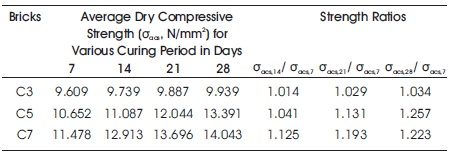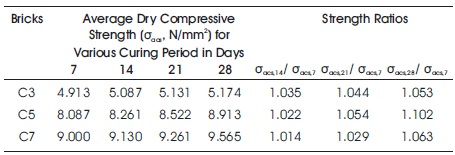
Figure 1. Surface Texture of Laterite Blocks before Dressing and After Dressing
In this experimental work, a series of test bricks were fabricated for the various percentage proportionate like a combination of 92% lateraite soil + 3% cement + 5% fly ash, 90% lateraite soil + 5% cement + 5% fly ash, 88% lateraite soil + 7% cement + 5% fly ash bricks were compacted with a hydraulic press paver block using brick making machine and cured for 7, 14, 21, and 28 days, tested as per IS specification in both required dry and wet conditions. Results of dry compressive strength, wet compressive strength, and water absorption were tabulated. Test results show that the maximum compressive strength of laterite soil bricks are more than conventional red clay burnt bricks at below 7% cement stabilizer with fly ash. In comparison of the obtained test results, minimum of 3% cement + 5% fly ash binding material is sufficient in order to achieve required compressive strength.
Laterite stone blocks have been used for masonry purposes in many tropical regions where they are readily available. In the western coastal regions of India, the abundance of the laterite had been utilised for the construction of permanent structures, which includes monuments like forts, temples, churches, and residential buildings. Laterite being locally available, cost effective, energy efficient and environment friendly building material in the Malabar region of Kerala and Dakshin Kannada and other parts of Karnataka makes, it is a material of choice for the present day constructions (Riza et al.,2010). The use of mobile rotary saw machine for laterite quarrying, since 1993, resulted in the large-scale production and use of laterite ashlars, in the construction industry. In spite of the advent of many new materials, laterite continued to be the predominant masonry material in the Malabar region of Kerala and coastal Karnataka (Ramaji, 2012). The provision of good quality housing is recognized as an important responsibility for the welfare of people in any country. For this, building materials based on natural resources are often used (Jagadish, 2008). The commercial exploitation of these resources often leads to various environmental problems (Veena et al., 2014). Therefore, the development of much alternative walling material made using different cementetious and pozzolonic materials will be of immense benefit to minimize the impact on the environment (Kabiraj & Mandal, 2012). Earth can be used for the construction of walls in many ways. However, there are few undesirable properties such as loss of strength when saturated with water, erosion due to wind or rain and poor dimensional stability (Modak et al., 2012). These drawbacks can be eliminated significantly by stabilizing the soil either with cement or lime. But for the production of cement, very high amount of energy is needed. The carbon dioxide emission was found to be nearly 1 ton for every 1ton production of cement. This harmful effect on environment can be reduced by the effective usage of resources (Amin, 2013). Hence, the new technology focuses on stabilized compressed earth block development incorporating an industrial by-product material, which is vital for the future construction (Riza et al., 2010). The added environmental advantage of utilizing industrial by-products available in the country will further improve the sustainability of masonry brick production (Nagaraj et al., 2014).
The main objective of this experimental work was to study the properties of fabricated bricks for the various percentage proportionate like combination of 92% laterite soil + 3% cement + 5% fly ash, 90% laterite soil + 5% cement + 5% fly ash, 88% laterite soil + 7% cement + 5% fly ash.
The disturbed laterite soil was collected from the laterite quarries of Hosanagar, Chandragutti, Thyagarti and Anandapura of Shimoga district, Karnataka. The residue (disturbed) laterite soil available after dressing of natural laterite building blocks was used, which is reddish brown in nature classified as A-2-7(0) using the American Association of State Highway and Transportation Officials (AASHTO) soil classification system and GP by the United soil classification system, and is shown in Figures 1 and 2. The physical and chemical properties of testing laterite soil are given in Tables 1 and 2, respectively.

Figure 1. Surface Texture of Laterite Blocks before Dressing and After Dressing

Figure 2. Residue Laterite Soil Available After Dressing and Passed through 4.75 mm is Sieve for Production

Table 1. Physical Properties of Laterite Soil

Table 2. Chemical Properties of Laterite Soil
Fly ash used was obtained from Grasim Industries, Harihar, Karnataka, india.
Cement used in this investigation was Ordinary Portland Cement (OPC-43 grade), which satisfies the requirements of IS: 8112-1989 specifications.
Ordinary potable water free from organic content, turbidity and salts was used for the mixing and for curing throughout the investigation.
For the production of pressure moulded laterite brick, the 4 kg of laterite soil was taken for each brick, based on the size of mould, soil was spread on clean and flat hard surface, to this known percentage of stabilizer (cement + fly ash) was added on weight basis followed by thorough hand mixing to the get uniform mix, finally potable water (calculated as per optimum moisture content) was added to the dry mix by sprinkling, soil was mixed with water gently but quickly, and care was taken to avoid formation of lumps in it during mixing. Entire mixing was carried out in an enclosed area and nearer to the compressing device, to avoid the evaporations of moisture content in the mix and to maintain the workability of wet mix. As soon as the wet mixture was prepared, the homogeneous mix was transported to compacting machine for pressing. The wet mix was placed on known size of the mould and compacted through hydraulic pressure. After compaction, the mould was taken out from the machine in ejection process. Further, brick was lifted carefully from the mould base plate and placed in an open dry place. Since the bricks are not burnt and less initial handling strength, extra care was taken while lifting, placing and stacking of the bricks.
The Hydraulic press paver block and brick making machine was used for the production of bricks. The bricks produced having uniform dimension of 230 x 100 x 75 mm. A net load of 10 tonne was applied a over cross-sectional area of 23000 mm2 of the brick. Since there was a constant compaction effort on all the bricks, there was less variation in strength characters of bricks that are produced and expected advantage of this research work. Due to heavy compaction, the difficulty of brick ejection from the mould may occur due to generation of suction pressure at the corners of mould.
The curing method used in this investigation was “Hay curing”. The paddy straw was spread over bricks, such that it completely covers them. The bricks were cured in sprinkling water gently on straws, thrice a day as shown in Figure 3. The curing was continued for 7, 14, 21, and 28 days based on the testing.
The following tests were conducted for stabilized laterite soil bricks.
The bricks were dried in sunshine for 2 to 3 days to remove moisture content inside the bricks completely for dry compression test. To conduct wet compression test, completely dried bricks were immersed in water for a duration of 24 hours. The bricks were than removed from water and the wetted surface was wiped out cleanly for test. For each average result five bricks per set were taken and the bricks were tested for compression as per IS: 3495- Part (1)-1992 specification on each specimen. The test results were tabulated in Tables 3 - 8.
Table 3. Test Results of Stabilized Laterite Soil Bricks (C3) Produced from Combination of 92% Laterite Soil + 5% Fly Ash + 3% OPC
Table 4. Test Results of Stabilized Laterite Soil Bricks (C5) Produced from Combination of 90% Laterite Soil + 5% Fly Ash + 5% OPC
Table 5. Test Results of Stabilized Laterite Soil Bricks (C7) Produced from Combination of 88% Laterite Soil + 5% Fly Ash + 7% OPC

Table 6. Average Dry Compressive Strength and Strength Ratios Test Results of Stabilized Laterite Soil Bricks

Table 7. Average Wet Compressive Strength and Strength Ratios Test Results of Stabilized Laterite Soil Bricks

Table 8. Comparitive Test Results of Burnt Bricks and Stabilized Laterite Soil Bricks
The dry weight (Wdry) of the bricks was taken and then it was dry immersed completely in clean potable water for 24 hours. After 24 hours, the bricks were removed from water and the wet surface was wiped out with a clean cloth and the weight was taken (Wwet) as per IS: 3495-Part (2)-1992 wet specification. The absorption was given by the relation,

Five bricks per set were taken and the average of five results was considered as 'Water absorption' of the bricks. The results were tabulated in Tables 3 - 8.
Tables 3 to 8 give the test results of stabilized laterite soil bricks produced from various combinations of the laterite soil + fly ash + OPC.
Based on the experimental results, the following observations and discussion were made.
Based on the experimental results, the following conclusions were drawn,